Greening Death
Greening Death
Reclaiming Burial Practices and Restoring Our Tie to the Earth
Suzanne Kelly
Rowman & Littlefield
Lanham Boulder New York London
To Joe Kelly
July 15, 1937February 12, 2000
Published by Rowman & Littlefield
A wholly owned subsidiary of The Rowman & Littlefield Publishing Group, Inc.
4501 Forbes Boulevard, Suite 200, Lanham, Maryland 20706
www.rowman.com
Unit A, Whitacre Mews, 26-34 Stannary Street, London SE11 4AB
Copyright 2015 by Rowman & Littlefield
All rights reserved . No part of this book may be reproduced in any form or by any electronic or mechanical means, including information storage and retrieval systems, without written permission from the publisher, except by a reviewer who may quote passages in a review.
British Library Cataloguing in Publication Information Available
Library of Congress Cataloging-in-Publication Data
Kelly, Suzanne, 1969
Greening death : reclaiming burial practices and restoring our tie to the earth / Suzanne Kelly.
pages cm
Includes bibliographical references and index.
ISBN 978-1-4422-4156-5 (cloth : alk. paper) ISBN 978-1-4422-4157-2 (electronic) 1. BurialEnvironmental aspectsUnited States 2. Funeral rites and ceremoniesEnvironmental aspectsUnited States 3. Environmental responsibility. 4. Human ecology. 5. NatureEffect of human beings on. I. Title.
GT3203.K45 2015
393'.1dc23
2015011558
 The paper used in this publication meets the minimum requirements of American National Standard for Information SciencesPermanence of Paper for Printed Library Materials, ANSI/NISO Z39.48-1992.
The paper used in this publication meets the minimum requirements of American National Standard for Information SciencesPermanence of Paper for Printed Library Materials, ANSI/NISO Z39.48-1992.
Printed in the United States of America
Acknowledgments
T his book belongs as much to me as it does to the many folks whove worked to build a better movement across the United States and to actively find ways to remake a meaning of human death rooted in the earth.
My absolute gratitude to all those who contributed interviews, information, or other such conversations, including Samuel Bar, Katey Bean, Ed Bixby, Sara Brink, Billy Campbell, Kimberley Campbell, Stephen Christy, Adriana Corral, Amy Cunningham, Robert Fertig, Brian Flowers, Meredith Harber, Ted Hollingsworth, Bob Jenkins, Freddie Johnson, Kate Kalanick, Rabbi Stuart Kelman, Kenneth Kyger, Joellen Lampman, Judith Lorei, Ellen Macdonald, Dyanne Matzkevich, Gordon Maupin, Dr. Bernard McEvoy, Pete McQuillin, Lisa Morahan, Father Charles Morris, Ann-Ellice Parker, Tara Pepperman, Vic Pizzonia, Joel Rabinowitz, John Eric Rolfstad, Andrew Schreiber, Joe Sehee, Kim Sorvig, Katrina Spade, Benjamin Stewart, Rick Touchette, Lee Webster, Liz Woedl, and Mary Woodsen.
Im most grateful to the Town of Rhinebeckthe cemetery committee and the town boardfor a shared belief in the value of natural burial and, also, for a job well done.
Thank you to my team at Rowman & Littlefield, first and foremost my editor Suzanne Staszak-Silva, for believing in my project from the gate, but also Kathryn Knigge, Elaine McGarraugh, and Desiree Reid for readying the book for publication. A special thank you to my friends and their great minds, Jane Caputi, Frances Chelland, Sabra Ciancanelli, and Ellice Litwak, whove listened to me talk about these ideas for too many years and provided me with vital and insightful comments. Also a special thank you to Benjamin Stewart, my new ally in struggle, for offering me fresh perspective in the reading of my chapters.
Im wholly indebted to those teachers whove gone before, above all Val Plumwood (19392008), whose thinking figures prominently in this book, and my mentor Teresa Brennan (19522003), friend, colleague, and fellow Australian to Plumwood, who lured me back to graduate school and imparted the ways of daring and drive in pursuing my own work.
Of course, I wouldnt have completed this book without the support of my family with their capacity for love and talent for levity in the face of death. Most especially Mickey Haggerty, whose steady belief in me, as well as the movement, has shored me up for all these years.
Introduction
Waking Up
The process of transformation consists mostly of decay...
Rebecca Solnit
G rief can take hold of us in many ways. It can masquerade as depression or a sense of personal failure. It can bring us closer or farther away from those we love. It can leave us feeling deserted or saved, in service or in need. But where exactly grief will take us is anyones guess.
When my father died in 2000, I joined the ranks of the bereaveda clan of straddlers, a liminal sectawaiting the release of griefs grip and a return to the work of the living. Perhaps its only when deaths door swings open and we can no longer look away that the lands of life and death can be coinhabited by those who are left behind. With both shores tugging at me in equal measure, whatever energy had given my life full direction seemed to altogether vanish. Grief felt like a kind of nonaction, a recurring derailment. But what I didnt know was that grief had a logic all its own.
While this book is not about grief, or even all that much about me, it was the generous workings of grief that provided the opening through which I came to write what is here. I was thirty, working on my PhD, and preparing for some future life of the mind when my father suffered a massive and fatal heart attack at sixty-two. For some time afterward, I felt wedged between the interests of life and death. But like so many others, the invisible rope tying me to the land of the dead would eventually begin to slacken, just as lifes grasp would begin to strengthen. When I finally journeyed back from that liminal place I realized that far from leaving me stranded, grief had actually anchored me back to life with fresh perspective. Indeed, Proust may have been right, that ideas come to us as the substitutes of griefs, and griefs, at the moment when they change into ideas, lose some power to injure our heart.
Up until then, my scholarly life had been centered on philosophies that tried to make sense of the denigration of matter, of the body in particular, mostly taking form in cultural fantasies of womens bodies and the planet as both playground and dump. Merged with the changing states of my own loss, those same questions began to shift to the dead bodywhat we think of it, what we do with it, and why. Death would retreat, and my grief, too, would eventually resolve. These questions, however, would remain unshakable by my side, leading me to grapple with the implications of our contemporary death practices at the same time that I become part of a growing movement to change them.
Death was not new to me. Id grown up with a large cultural mix of Orthodox Greeks and CatholicsIrish, Polish, Italianand had been attending wakes and funerals since before I could remember. Even in the 1970s, Catholic death practices were fairly uniform, especially in urban places like New York. And because I was not shielded from the corpse, because I was encouraged to see, my gaze had already fallen many times upon that fleshy fact of death. The exact course of my thinking is not so easy to chart now, almost a decade and a half later. But the answers did come, sometimes with great force, clarity, and conviction, and sometimes quietly in shapes and frames that took some sorting out. What I know for sure is that snaking my way down that new trail of questions amounted to a kind of waking up to death.
That waking up to death might come more easily with the fleshy facts available makes sense. Funeral directors will tell you as muchthat the point of the wake, or viewing, is to come to terms with the physical loss. Anyone whos ever stood over a casket knows all too well that other reasonthe worry that the dead might actually still be alive! I grew up hearing that the word wake was an outgrowth of this fear, that our watching was practical, and that we witnessed to ensure that death was in the room. For a time in our history this had its purpose, but medical advances along with the invasive practice of embalming eventually shut out any potential for those mishaps.
Next page
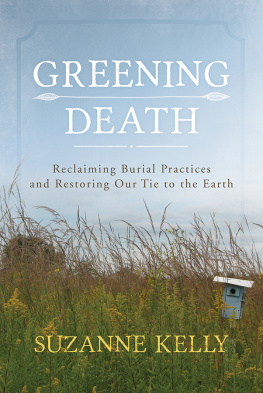






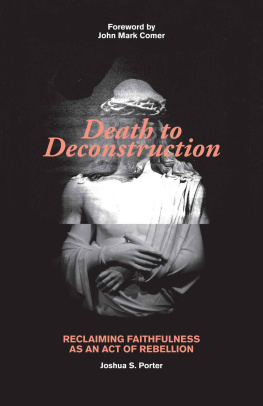

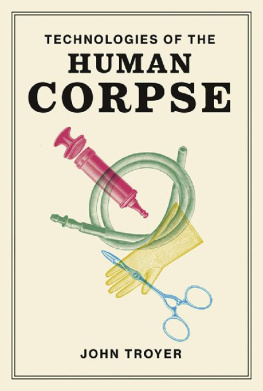

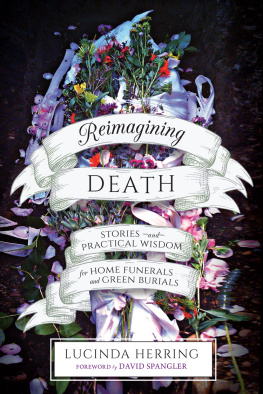

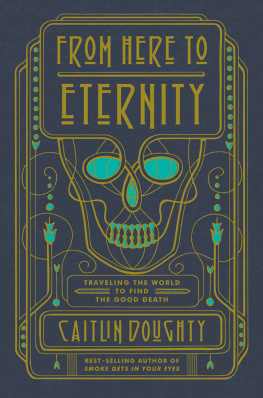
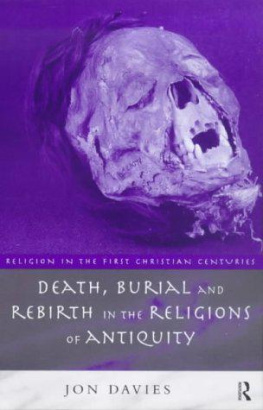
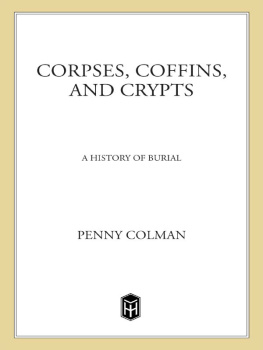
 The paper used in this publication meets the minimum requirements of American National Standard for Information SciencesPermanence of Paper for Printed Library Materials, ANSI/NISO Z39.48-1992.
The paper used in this publication meets the minimum requirements of American National Standard for Information SciencesPermanence of Paper for Printed Library Materials, ANSI/NISO Z39.48-1992.